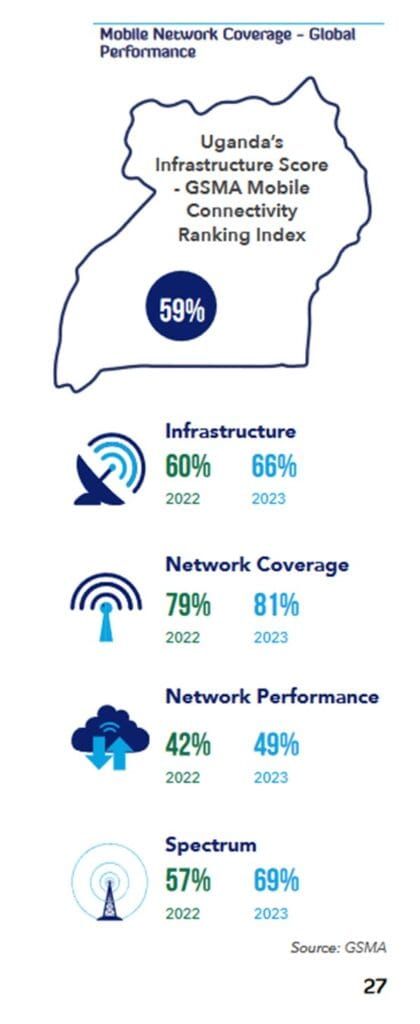Uganda has made significant strides in expanding its telecommunications infrastructure, with a 66% increase in tower coverage between 2019 and 2023. The latest UCC industry report indicated that as of 2023, there were 5,064 towers across the country, up from 3,044 in 2019.
This expansion has been crucial in improving mobile telecom connectivity for consumers and facilitating the provision of essential digital services such as banking, health, education, defense, and e-governance.
ALSO READ: How to top up your Eversend USD account using a credit/debit card
Regional Tower Distribution
All regions of Uganda have experienced notable growth in the number of towers. The Central Region has the highest concentration, accounting for 46% of the country’s total towers, largely due to the density of towers in the Kampala metropolitan area. The Western Region accounts for 23% of the towers, while the Northern and Eastern Regions each have 16%.
The Uganda Communications Commission (UCC) is actively working to ensure that even the most remote communities have access to essential telecom services through initiatives like the UCUSAF, which aims to roll out more towers in underserved areas.

Fiber Infrastructure Expansion
Uganda’s fiber optic network has also seen substantial expansion, growing by 71% from 19,709 km in 2019 to 33,653 km by December 2023. This growth is essential for Uganda’s ICT development as fiber optic technology can transmit large volumes of data at high speeds over long distances with minimal signal loss.
The government plans to further expand fiber infrastructure in the coming years, particularly in the North and North East regions.
Mobile Network Coverage Progress
Uganda has registered notable progress in mobile network coverage, driven by the expansion of tower coverage and the awarding of spectrum to telecom operators such as MTN, Airtel, and Lyca.
Between 2019 and 2023, 3G network coverage increased from 48% to 72%, while the more advanced 4G network increased from 34% to 55%. 2G network coverage is currently at 76%.
According to the GSMA Mobile Connectivity Index, Uganda scored 59.5 in infrastructure in 2022, indicating robust network coverage and moderate network performance.
Conclusion
Uganda’s telecommunications infrastructure has seen substantial improvement in recent years, with significant growth in tower and fiber optic network coverage. These advancements are crucial in facilitating greater access to essential digital services and promoting Uganda’s participation in the digital economy.

